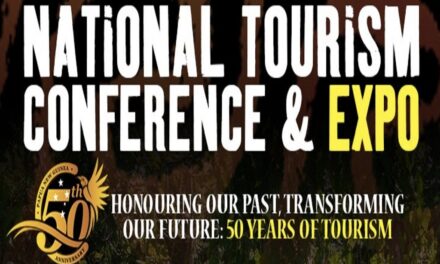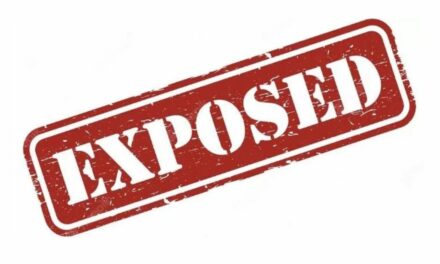The DFAT recruiting process, which led to the employment of an American anthropologist without any military heritage credentials, as Australia’s ‘National Military Heritage Advisor’ on a generous 6-figure salry raises serious questions regarding proper governance.
This is because the tender was kept secret from the Department of Veterans Affairs (DVA), the Department of Defence, the Australian War Memorial (AWM), and accredited Australian military historians with expert knowledge of the Kokoda campaign.
Serious questions indeed!
First published September 2018
Abt Associates, a DFAT funded global development consulting firm, posted the following information in an advertisement for a Military Heritage Advisor at the PNG National Museum and Art Gallery:
‘The PNG National Museum and Art Gallery (the Museum) is a core member of the Kokoda Initiative, being legislatively responsible for the preservation of all WWII war remains and artefacts. With most trekkers on the Kokoda Track being attracted by the military history of the Kokoda Campaign and its associated heritage, the preservation of the remaining evidence of the military presence on the Track is essential. The PNG Kokoda Initiative Master Plan envisages the development of a Kokoda Track Management Plan which will be made up of several elements including the strategic management of the military heritage on the Track.‘This plan will itself make up a critical element of the Environmentally Sustainable Development Master Plan being developed by CEPA for effective management of all values in the Brown River/Owen Stanley Range/Kokoda catchment.’[i]
According to Mr Tom Battams, Third Secretary (Kokoda) at the Australian High Commission in Port Moresby:
‘The position was advertised on the Abt Associates (Australia) website and LinkedIn page from Abt Associates which is the Australian Government’s lead contractor engaged in the delivery of KI. The advertisement was shared proactively with universities, the Army Museum of WA[ii], Darwin Military Museum[iii], Army Museum of NSW[iv], Army Museum of South Australia[v], and through local and international networks by NMAG, KTA, CEPA and Kokoda Initiative staff.’
One would assume the role of an overseas High Commission is to refer agencies to appropriate government departments for action. In this case it would have been Defence, Veterans Affairs and the Australian War Memorial which is the custodian of Australia’s military heritage.
The statement by Mr Battams is indicative of a carefully crafted strategy to bypass these three agencies.
The PNG National Museum and Art Gallery (NMAG) is responsible to the Minister for Tourism, Arts and Culture. It is a cultural museum which has no expertise in military heritage. It has been subject to allegations of corruption in recent years. The former CEO, Dr Andrew Moutu, is an anthropologist.
Neither the KTA nor CEPA have any expertise in military heritage.
Mark Nizette MBE was assigned to the Kokoda Initiative as a ‘Strategict Advisor’ in 2011 – his position was later upgraded to ‘Strategic Management Advisor’. Nizette was aware that many treks across the Trail were led by Australian military historians who were expert in the Kokoda campaign. He was born in Lae, is fluent in Tok Pisin, and had previously studied pre-history and anthropology at the Australian National University. His LinkedIn profile indicates he is a candidate for a Doctorate in this area. He is a close associate of Dr Moutu and Dr. Connolly.
Mr Battams also advised:
‘The Australian Government is strongly encouraging NMAG to quickly establish an advisory body of military heritage experts and tour operators to ensure the views and interests of operators are reflected in the final Military Heritage Strategy. We urge trekking operators to contribute constructively to this body to give it every chance to succeed.’
This statement is misleading.
The Abt document was dated 15 July 2016, however the advertisement for the position was inexplicably delayed until the peak of the Christmas holiday season between 19 December 2016 to 8 January 2017!
The military museums mentioned were closed during this period and none of the Kokoda tour operators listed on the KTA website were advised of the position.
The successful candidate was an American anthropologist, Dr Andrew Connelly, whose thesis for his master’s degree in Anthropology was ‘Counting Coconuts: Patrol Reports from the Trobriand Islands. Part 1: 1907-1934’.His thesis for his doctorate was‘Amvivalent Empire” Indigenous and Colonial Historicities in the Trobriand Islands, 1832-1941’.
Dr Connelly, who does not have any qualifications relating to military heritage[vi], is an associate of Dr Andrew Moutu and Mark Nizette.
Former Lieutenant Colonel Rowan Tracey would certainly have applied for the position if he had been notified of it.
Colonel Tracey is without peer as a military historian of the Kokoda campaign. He was a Sword of Honour recipient from the Royal Military College, Duntroon. He served with the PNG Defence Force during his army career and is fluent in Tok Pisin. He first trekked across the Trail 40 years ago and many times since then. He is the author of the official history of the 2nd Australian Infantry Division and was previously invited to address an international conference on the Kokoda campaign at the Australian War Memorial. He is Australia’s foremost historical expert on the Kokoda campaign.
Mark Nizette MBE was fully aware of his credentials but did not take any action to advise him of the position.
The process involving the engagement of an American anthropologist as Australia’s National Military Heritage Advisor in PNG should be the subject of a formal investigation to allay any concerns of possible collusion or breaches of good governance.
The Terms of Reference should include:
- Who established the need for a National Military Heritage Advisor for PNG?
- What was the justification for the proposal?
- Why did the Australian High Commission in Port Moresby strongly encourage NMAG ‘to quickly establish an advisory body of military heritage experts and tour operators to ensure the views and interests of operators are reflected in the final Military Heritage Strategy’?
- Why were the advertisements for the position delayed from the time it was first proposed by Abt Associates on 15 July 2016 until the peak holiday period almost six months later in 2016-17?
- Why were DVA, AWM, and the ADF excluded from the list of tenders?
- Why was Lieutenant Colonel Rowan Tracey not invited to apply for the position given that he was known to the DFAT Strategic Management Advisor, Mark Nizette, and is an acknowledged military expert on the Kokoda campaign because of his 40 years’ experience on the trail; his previous assignment with the PNG Defence Force; and his fluency in Tok Pisin?
- Why was the tender kept secret from former army officers who had been leading treks across the Kokoda Trail over the previous 24 years?
DFAT Fraud declined by request to investigate the issue in 2022 – I do not believe such a process would escape the attention of corruption watchdogs in Australia.
[i] http://abtjta.turborecruit.com.au/position_description/497/IFA%20-%20NMAG%20Military%20Heritage%20Adviser.pdf
[ii] The Army Museum of WA is a regional museum of the Australian Army History Unit network of museums throughout Australia managed by Army reservists and volunteers.
[iii] The Darwin Military Museum provides a learning and commemorative war experience about the NT, also other parts of Australia’s, rich military history in a sensitive and respectful manner.
[iv] The Army Museum of New South Wales . . . features many army uniforms from the earliest Colonial times through the Boer War, WWI and WWII; medals awarded including Victoria Crosses, Military Crosses, Distinguished Service Orders, Campaign Medals, Royal honours; and various historical.
[v] The Army Museum of South Australia began in 1992 when a need to collect and preserve our military history was recognised.Volunteers, mainly ex-defence force members, operate the Museum with the assistance of a Defence Force Cadre staff. Volunteers attend the Museum on Mondays and Wednesdays to conduct repairs, restoration and renovations to the various exhibits and equipment on display for public viewing.
[vi] This was evident in Dr Connolly’s final report where he referred to the Kokoda campaign as an ‘event’ and one that sought to ‘recognise the prominent roles of Japan and the USA in PNG’s war history, as well as the place of other nations, including the UK, India, Fiji, China, Korea, Taiwan, etc.’ There is no doubting that Japan had a prominent role in the war – they invaded Papua and New Guinea! Dr Connelly does not seem to be aware of the fact that the UK, India, Fiji, China, Korea, Taiwan, etc were not involved in the Kokoda campaign.





